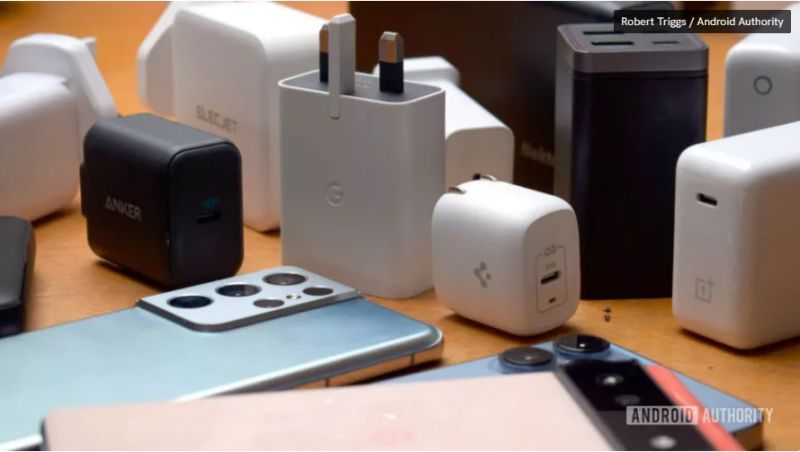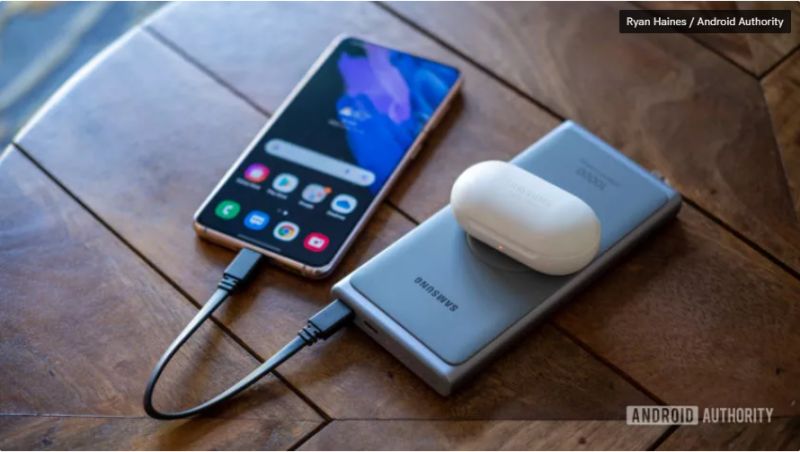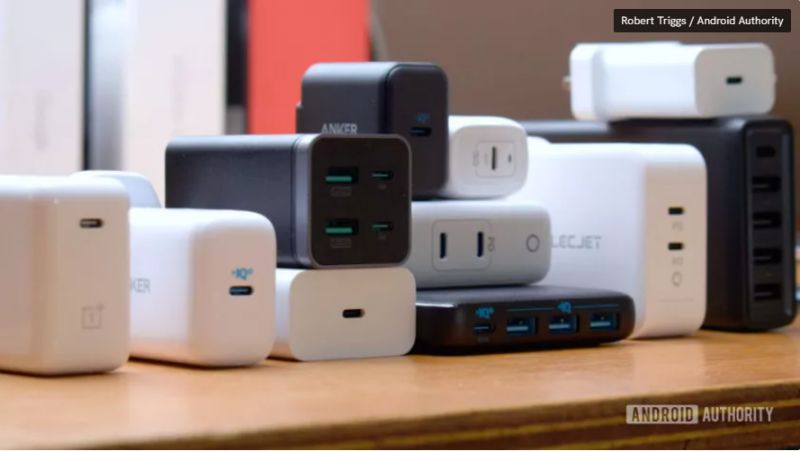Picking the best charger for your smartphone and other gadgets has always been a bit of a chore, and the growing trend in handsets shipping without a boxed adapter has only made the process more arduous. The many charging standards, cable types, and brand-specific terminology certainly doesn’t help narrow down your needs.
Charging your phone is simple enough — plug in the USB-C cable to any old plug or port, and you’re off. But is the device really fast charging or powering up as optimally as possible? Unfortunately, there’s no guaranteed way to know. Fortunately, we’re here to help. When you’re done with this article, you’ll be fully equipped to pick out the best charger for your new smartphone, laptop, and other gadgets.
A quick primer on charging your phone
Smartphones often give you a generic indicator like “fast charging” or “rapid charging,” but that’s not always helpful. Google’s Pixel 7, for instance, just displays “Charging rapidly” whether you’re plugged into a 9W or 30W charger. Hardly helpful.
When picking out a travel adapter, charging hub, power bank, or wireless charger for your phone, there are two key things to consider. The first is the amount of power you’ll need. Fortunately, manufacturers often list the maximum charging power their device is capable of on the spec sheet.
USB-C can charge everything from headphones to high-performance laptops.
Broadly speaking, smartphones range from 18-150W, while tablets go up to 45W. The latest laptops may even offer 240W charging over USB-C. Finally, smaller gadgets like headphones tend to make do with basic 10W charging.
The second is the charging standard required to obtain this level of power. This is the trickier part, as devices often support multiple standards that offer different power capabilities — particularly super-fast-charging Chinese smartphones that use proprietary standards to provide very high power levels. Fortunately, these devices still ship with chargers in the box. Still, you’ll want to know the fallback charging protocol if you plan to buy a multi-charging hub or power bank.
Fast charging requires an adapter with both the right protocol and amount of power.
Generally, there are three categories that every smartphone charging standard fits into:
Universal — USB Power Delivery (USB PD) is the most common USB-C charging standard for phones, laptops, and more. USB PD comes in a few flavors but the main thing to note is whether your phone requires the advanced PPS protocol. Qualcomm’s Quick Charge 4 and 5 are compatible with this standard, also making them universal. Qi is the equivalent universal option in the wireless charging space. Some brands use unique names despite their reliance on USB PD, as you’ll find with Samsung’s Super Fast Charging.
Proprietary — OEM-specific charging standards are used to obtain higher speeds than USB PD. Support is often limited to the company’s own products and plugs, so you’ll seldom find support in third-party plugs and hubs. Examples include OnePlus’ Warp Charge, OPPO’s SuperVOOC, Xiaomi’s HyperCharge, and HUAWEI’s SuperFast Charge.
Legacy — Some pre-USB-C standards still linger in the marketplace, particularly in lower-powered gadgets and older phones. These include Quick Charge 3, Apple 2.4A, and Samsung Adaptive Fast Charging. These are gradually phasing out of the marketplace but are still occasionally used as a fallback protocol for modern gadgets, including Apple and Samsung smartphones.
The magic formula for correctly fast charging your smartphone or USB-C laptop is to buy a plug that supports the required charging standard while also providing enough power to the device.
How to find your phone’s correct charging standard
With the above in mind, if your phone uses a proprietary charging standard or comes with an adapter, you’ll receive the fastest charging speeds by using the plug provided in the box — or, failing that, a similar plug that offers an equivalent power rating. Reusing plugs from old devices is a great idea where possible and is always worth a try first.
Ensuring you have the correct charging standard is more of a headache if your phone doesn’t ship with a charger in the box or if you’re looking for something that will play nicely with all of your gadgets. The best place to start your search is on the manufacturer’s spec sheet. There are no guarantees here though — some list the required charging standard to obtain peak speeds, while others don’t.
See the official spec sheets below for an example of what to watch for.
While these major brands do an okay job, there are some issues even here. For instance, Apple’s product page lists the wireless charging standards but glosses over the fact you need a USB Power Delivery plug for fast wired charging. Meanwhile, Google’s spec sheet lists the required specification but implies you need a 30W charger, when in fact, the Pixel 7 Pro pulls no more than 23W from any plug.
If you can’t find mention of a charging standard, it’s a reasonable bet that any phone bought in the past couple of years will support USB PD in some form, although we have spotted that even some flagship phones don’t. Regarding wireless charging, Qi is a pretty safe bet for most modern devices outside of a few exclusively proprietary charging models. We’re also awaiting smartphones sporting the new Qi2 charging protocol, which will add a ring of magnets but keep the maximum charging rate at 15W.
How to pick the best smartphone charger
Now that you know the right standard and the amount of power you need, you can cross-reference these specifications with the adapter you have in mind. If buying a multi-port adapter, charging hub, or power bank, you’ll want to ensure that enough of the ports meet your power and protocol requirements.
Again, some manufacturers are more forthcoming with this information than others. Fortunately, we test charger ports as part of our charger review process to ensure they work as anticipated.
See also: The best phone chargers — a buyer’s guide
When considering multi-port adapters, note that each USB port often provides different standards, and will have to share their power rating when plugging in multiple devices, often unevenly. So check the capabilities of each port, where possible. You’ll also want to ensure that the maximum power rating of your charger can handle the full load you’re anticipating. For example, charging two 20W phones from one plug requires at least a 40W charger or perhaps even 60W for a bit of headroom. Often this isn’t possible with power banks, so just aim for as much power as you can.
Post time: Aug-11-2023





